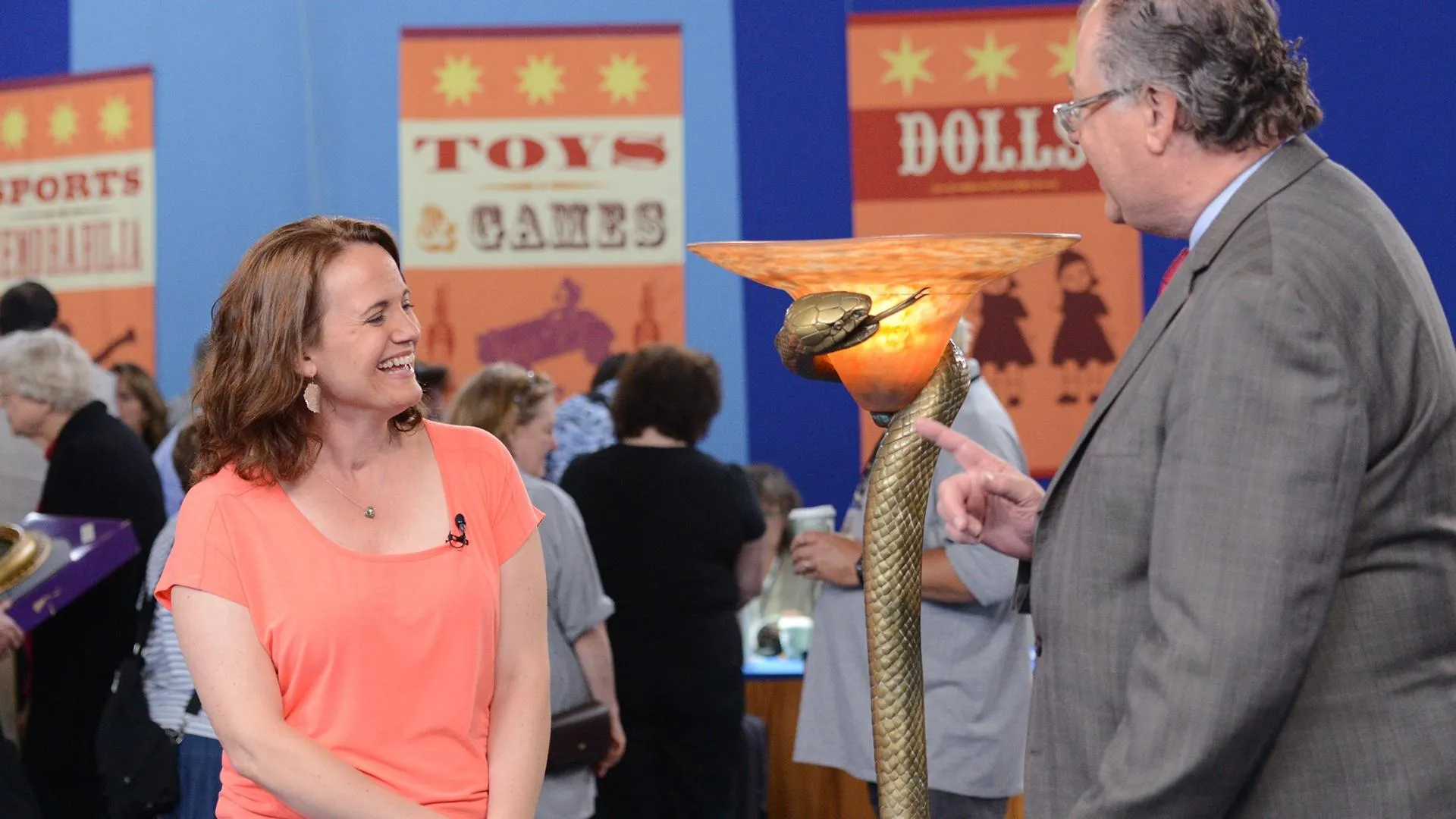GUEST: My mother gave this to me about ten years ago. She lived in Vancouver, Canada. She got this from my stepfather. He took a trip to China as part of a delegation from Canada, and it was a gift to him from the people of China.
APPRAISER: When was this trip?
GUEST: I believe it was in the late '70s. I was told by my mother that it's a Chinese throne cloth or a robe, and that's really all I know about it. I've had it for ten years, and it's basically been in a box in the closet.
APPRAISER: Well, it's not only a Chinese robe, it's an Imperial Chinese dragon robe. And it's uncut, which is quite unusual. Normally, you see them as a robe with long sleeves, and a cuff and collar. Why was it uncut? Because the emperor wore these and changed robes every day or two. So there was a backlog of these ready to be made up on the spot when he changed his robes. This was made about 1880, and it was probably stored in Beijing until the 1970s and then gifted to your stepfather. You have the Imperial five-clawed dragon on a yellow ground. Yellow was restricted for imperial use. You have peaches of long life. You have bats, which are also symbols of happiness, and when associated with what we call the reverse swastika-- which is actually not a swastika at all, it's a Buddha's heart, and other symbols-- it basically is a symbol of imperial power.
GUEST: Is this on silk?
APPRAISER: Yes, it's on silk. Now, what this is missing is the back slip, and unfortunately, half of it in the back is gone.
GUEST: Okay.
APPRAISER: So we're lacking the collar, and we're lacking the interior back slip. At auction, in this condition, even with a partial loss, the piece would be worth at least $10,000 to $15,000.
GUEST: Wow, really?
APPRAISER: It's very difficult to find these uncut robes anymore. If it were complete, you'd be about $20,000 to $30,000. So you have a marvelous piece here.
GUEST: Well, thank you, that's beautiful.



